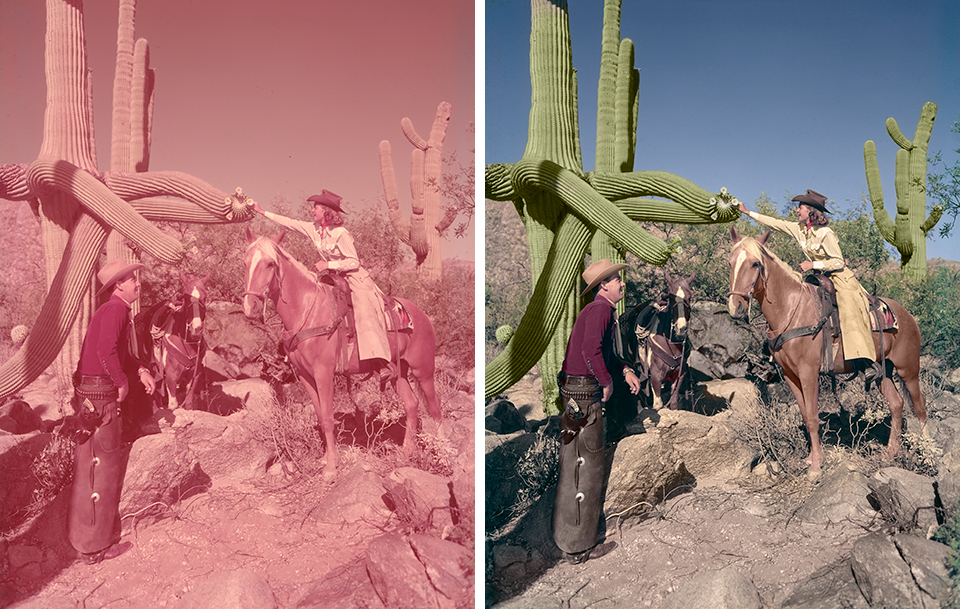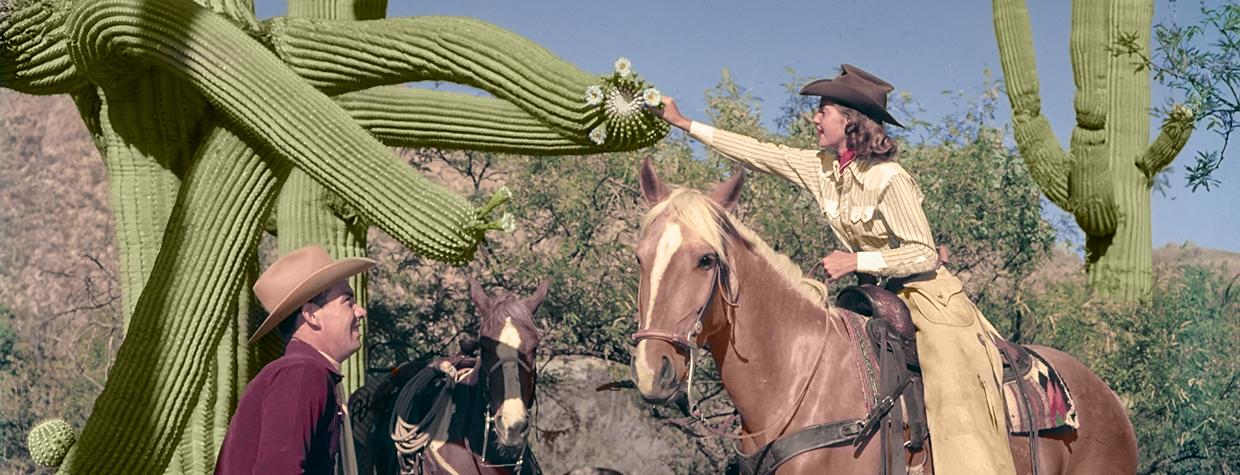JK: Tell me about your history in photography, printmaking and photo restoration.
RJ: My interest in photography began when a good friend introduced me to the darkroom in eighth grade. I studied photography at a fine arts college in Chicago, then served as a photographer in the U.S. Air Force during the Vietnam War. Eventually, I realized I liked printing and working in the darkroom more than being behind a camera, and I’ve spent my career doing those things. My wife and partner, Kathy Lampros, and I founded Hance Partners in 1990, and we’ve been printing for landscape photographers, fine art photographers and photojournalists since then. Currently, I spend most of my time working with photographers who are preparing images for an exhibition or book publication, or making individual prints for sale to collectors. For about 12 years, though, I’ve worked on restoring color in faded Ektachrome transparencies from the 1950s and ’60s.
JK: What are some of the challenges?
RJ: Unfortunately, early Ektachrome professional films have an unstable layer of cyan dye. This means that over time, processed Ektachrome film begins to develop an overall red cast as the cyan dye fades, leaving the more stable magenta and yellow dye layers. Another challenge is that these films don’t fade evenly. As you can see on the original version of this image, it has more of a magenta cast in some areas than it does in others.
JK: What’s your approach to bringing the color back?
RJ: Without getting too technical, I have to go through each image element by element. I do this by splitting the image into layers and adjusting each layer individually, painting each selection the color I want it. For example, on this image, the saguaro had various color tones that weren’t consistent with what a saguaro should look like, so I had to select the cactus, then go to a source that has nice-looking saguaros and paint this cactus the same color. This is done primarily in Adobe Photoshop, and when I’m done, there are usually 12 to 30 layers in the image, depending on how much work was necessary. And each image takes me anywhere from 90 minutes to three hours to restore.
JK: How did you learn these techniques?
RJ: I’m partly self-taught, but I also try to collaborate with people who are better than me, and I learn a lot that way. I’m still learning. My background has helped because I’ve been working with film my entire career, so I’m familiar with Ektachrome transparencies and how they differ from, say, Kodachrome. Even if I can’t remember exactly what something should look like, I know enough that I’m able to find other references, whether they’re online or in printed material.

JK: The photos you restored for us are from dude ranches. Do you have any history with ranching?
RJ: I’ve never been on a dude ranch, so I’m sorry to say I didn’t have any memories to use when thinking about restoring the color in these images. What I do have experience in is landscape photography, so I’m able to know, for example, how a saguaro should look and how to find objects in the scene that should present as neutral. From there, I can do research online to find examples of similar subjects and use those as references.
See more restored images in Back at the Ranch, from our February 2023 issue.
Do you have a question about photography? Email it to [email protected], and our photo editor, Jeff Kida, will try to answer it in a future issue.

